Asset Tagging Your Equipment: What You Should Know
by Stephanie Faris on Tuesday, Fabruary 06, 2018 13:30
A business relies heavily on the equipment it uses to manage daily operations, but keeping track of laptops and mobile devices can be challenging.
This is especially true of larger businesses with employees working away from the office.
One of the best ways to manage all of that equipment is to apply a tag that includes information that can make it easily identifiable.
But is asset tagging the right choice for your business? If so, what do you need to do to make your asset tagging process as successful as possible?
This guide will help you implement asset tagging in your business and manage it successfully in the weeks, months, and years that follow.
Why Tag?
Once your equipment leaves your offices, it becomes difficult to differentiate it as belonging to your business.
An employee could say he or she lost a laptop, for instance, when really that piece of equipment has been repurposed for home use.
With a tag in place that clearly identifies your business as its owner, the employee has an obstacle to overcome in the form of removing the tag.
There are asset tags that affix firmly to equipment, making this even more difficult.
Asset tags also give you a number and, in some instances, a bar code that can make the process of inventorying it easier.
Overall, an asset tag simply assigns a unique ID to each piece of equipment that you can then use for internal reporting purposes.
What Your Tag Should Have
Each asset tag should have a number that you can then reference in your inventory tracking system.
If you opt for a barcode scanning system, have that in place, as well.
The text on the asset tag should look official, with words like, “Property of [your business name]” prominently featured.
If one of your pieces of equipment is someday lost, this will make it easier for someone to return it to your business.
Tracking Your Tag
Marking your equipment is only one part of asset tagging. You'll also need a system designed to track it.
This system should be as easy as possible to save time for your own employees.
Make sure at least once a year, the person tasked with your inventory management sees every piece of equipment during the audit process.
Otherwise, it can be easy for an employee to disguise the fact that an item has been lost over the years.
If someone reports a device as lost or stolen, have a procedure in place to log this information, attaching police reports if you have that available.
Part of any asset tracking process is ensuring that you properly log each item once it reaches its end of life.
Whatever your process of disposing of old equipment, make sure you erase and destroys all hard drives to prevent your data falling into the wrong hands.
National Computer Warehouse Services specializes in IT hard drive disposal and we can keep your business safe.
Contact us today to find out how we can help you with your equipment recycling needs.
